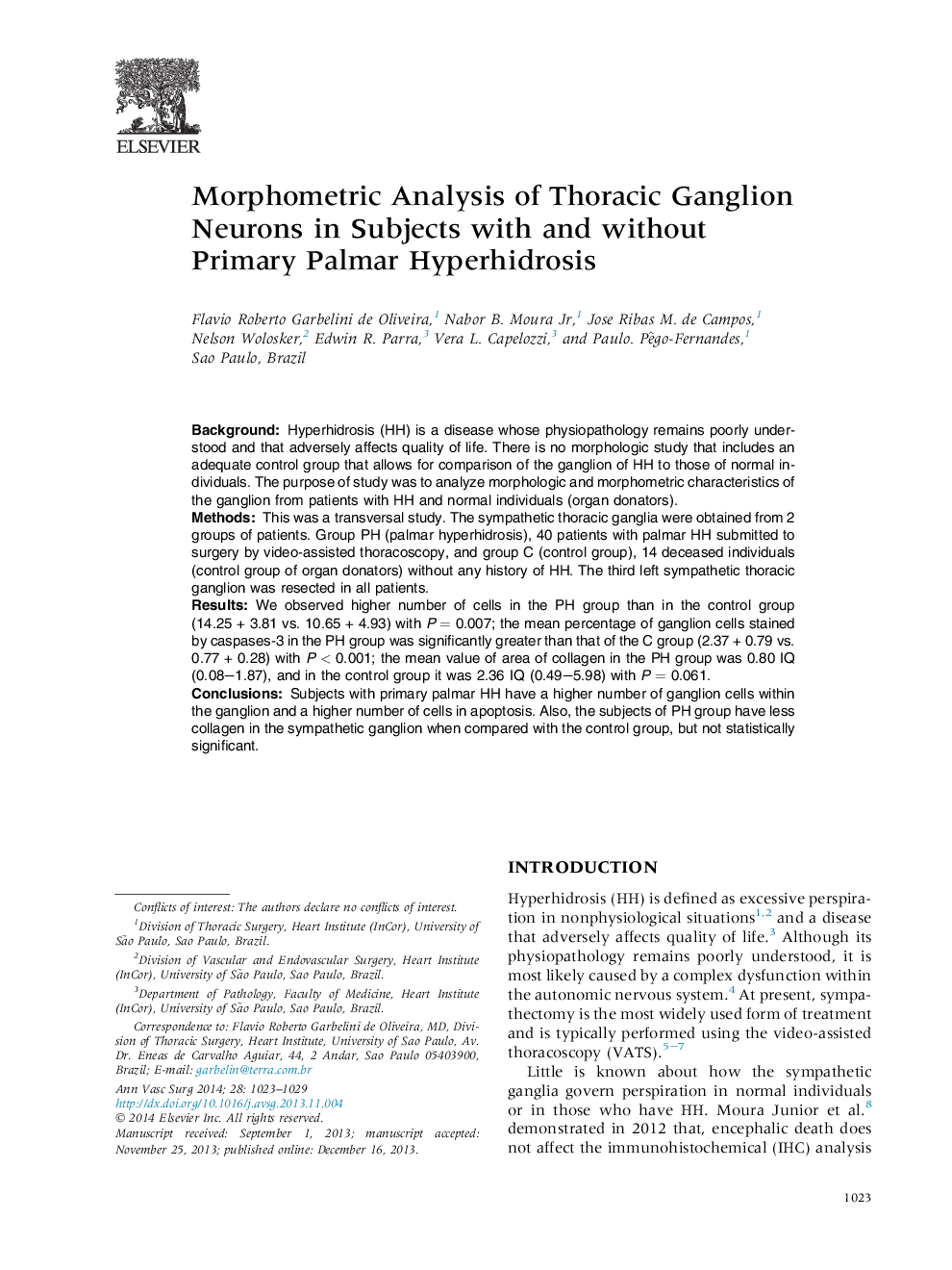| Article ID | Journal | Published Year | Pages | File Type |
|---|---|---|---|---|
| 2886702 | Annals of Vascular Surgery | 2014 | 7 Pages |
BackgroundHyperhidrosis (HH) is a disease whose physiopathology remains poorly understood and that adversely affects quality of life. There is no morphologic study that includes an adequate control group that allows for comparison of the ganglion of HH to those of normal individuals. The purpose of study was to analyze morphologic and morphometric characteristics of the ganglion from patients with HH and normal individuals (organ donators).MethodsThis was a transversal study. The sympathetic thoracic ganglia were obtained from 2 groups of patients. Group PH (palmar hyperhidrosis), 40 patients with palmar HH submitted to surgery by video-assisted thoracoscopy, and group C (control group), 14 deceased individuals (control group of organ donators) without any history of HH. The third left sympathetic thoracic ganglion was resected in all patients.ResultsWe observed higher number of cells in the PH group than in the control group (14.25 + 3.81 vs. 10.65 + 4.93) with P = 0.007; the mean percentage of ganglion cells stained by caspases-3 in the PH group was significantly greater than that of the C group (2.37 + 0.79 vs. 0.77 + 0.28) with P < 0.001; the mean value of area of collagen in the PH group was 0.80 IQ (0.08–1.87), and in the control group it was 2.36 IQ (0.49–5.98) with P = 0.061.ConclusionsSubjects with primary palmar HH have a higher number of ganglion cells within the ganglion and a higher number of cells in apoptosis. Also, the subjects of PH group have less collagen in the sympathetic ganglion when compared with the control group, but not statistically significant.
